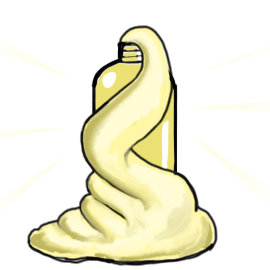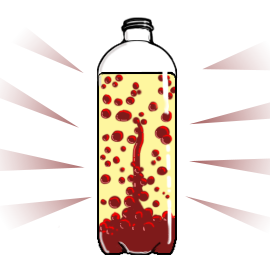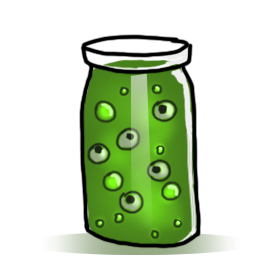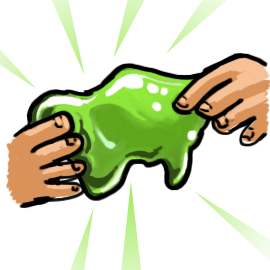More science videos on Science Bob’s YouTube Channel
You will need
- A clean 16 ounce (473 ml) plastic soda bottle or a water bottle.
- 20-Volume hydrogen peroxide liquid (20-volume is a 6% solution that is stronger than what you find in most pharmacies. It is typically used for lightening hair and is found at many beauty supply stores. You can use the 3% hydrogen peroxide found in pharmacies, but the reaction will be a bit smaller)
- 1 Tablespoon (15ml – one packet) of dry yeast
- 3+ Tablespoons (15 ml) of warm water
- Liquid dishwashing soap
- Food coloring
- Small cup
- Funnel
- Safety goggles
- Adult help
NOTE: The foam could overflow from the bottle, so be sure to do this experiment on a washable surface, or place the bottle on a tray.
CAUTION: The unreacted hydrogen peroxide can irritate skin and eyes. Read the safety information on the hydrogen peroxide bottle and be sure to wear safety goggles.
What to do
- Use a funnel to carefully pour 3/4 cup (180 ml) of the hydrogen peroxide liquid into the bottle
- Add about 10 drops of your favorite food coloring into the bottle.
- Add about 1 tablespoon (15ml) of liquid dish soap into the bottle and swish the bottle around a bit to mix it.
- In a separate small cup, combine the warm water and the yeast together and mix for about 30 seconds. It should be about the consistency of melted ice cream – add a bit more warm water if needed.
- Now the adventure starts! Use the funnel to pour the yeast-water mixture into the bottle and watch the foaminess begin!
Can I touch the foam?
The reaction typically breaks down the hydrogen peroxide so you are left with mostly just soapy water and yeast. There can, however, be un-reacted peroxide which could irritate skin and eyes. For that reason, it is recommended you do not touch the foam.
(If you use the 3% hydrogen peroxide found in most pharmacies, then the foam can be touched safely.)
How does it work?
Foam is awesome! The foam you made in this classic Elephant’s Toothpaste reaction is extra-special because each tiny foam bubble is filled with oxygen. The yeast acted as a catalyst; a catalyst is used to speed up a reaction. It quickly broke apart the oxygen from the hydrogen peroxide. Because it did this very fast, it created lots and lots of bubbles. Did you notice the bottle got warm? Your experiment created a reaction called an Exothermic Reaction – that means it not only created foam, it created heat! The foam produced is just water, soap, and oxygen so you can clean it up with a sponge and pour any extra liquid left in the bottle down the drain.
This experiment is sometimes called “Elephant’s Toothpaste” because it looks like toothpaste coming out of a tube, but don’t get the foam in your mouth!
Make it an experiment:
The project above is a DEMONSTRATION. To make it a true experiment, you can try to answer these questions:
- Does the amount of yeast change the amount of foam produced?
- Will the experiment work as well if you add the dry yeast without mixing it with water?
- Does the size of the bottle affect the amount of foam produced?
Science Bob











